Below is an interview with Justin Fix of Just Fix It Productions, detailing the cost, risks, lessons, and recommendations that all go into running an immersive company and producing an experience. Use it as a primer or do your own thing—this is only meant as a helpful document for those who want to learn from someone who has seen success in this space.
Thank you to Erik Blair for transcribing the initial interview, to Lacey Rae for helping organize quotes, and to Justin Fix for providing his expertise that I think will prove essential to the immersive market for years to come.
Immersive theater is growing exponentially in Los Angeles—and across companies, it varies in production costs, number of actors, locales used, and audience size. But despite the differences, the one unifying theme is that they are businesses and need to be run as such. This includes hiring a staff, securing insurance, dealing with the city, managing public relations, holding auditions and rehearsals, finding a space, renting props, and much, much more.
This article addresses some of the most common questions we receive at Immersed and utilizes the expertise and experience of Justin Fix of Just Fix It Productions (CreepLA, Entry, LORE, Awake, & The Willows) to provide in-depth insight to these issues and to the cost of immersive theater with real numbers.
This is a must-read for any creator, new and established, to the immersive realm.
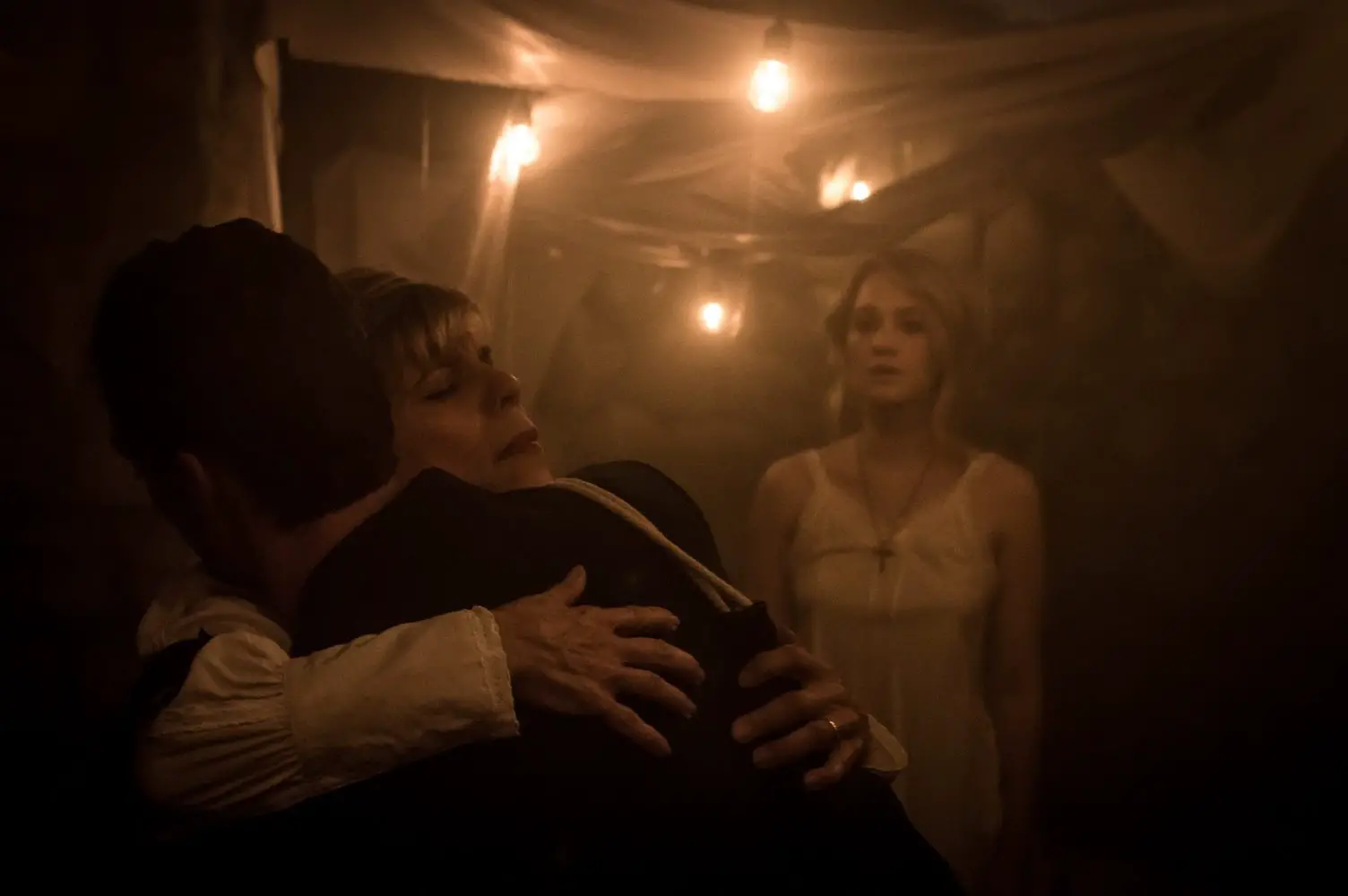
BUSINESS
What is your goal?
To start any business or company, the first thing to decide is what exactly your company is going to be. That sounds like a simple question, but there’s a lot to decide before you even get to your first experience. Researching your market, namely your audience demographics, other companies in the space, and industry trends, can help you define your own niche, meet a consumer need, and stand out in a booming theatrical field. Developing a strong brand identity can also help. But ultimately, what drives your company will be its mission, vision, and values.
Fix suggests that knowing your strengths can help determine your mission and priorities—which will inform your desired budget allocation. A company like Scout Expedition Co. that has a strong background in set design put their focus (and money) towards that, while a company like They Played Productions, that prioritized interactivity, placed a focus on strong actors with improv skills over expansive sets. “Maybe acting is third on your tier; maybe the first ones are more akin to escape rooms and puzzles,” Fix explains. “It’s just how you want to come to market.”
When you’re ready to make yourself known, then you have to set up your LLC, buy your domain, and build out your website. Fix admits, “We did that scrappy. We bought a SquareSpace account and a domain through GoDaddy. We did all our email blasts through MailChimp and used Quickbooks for accounting.” These are all monthly costs that require minimal upkeep but can add up quickly.
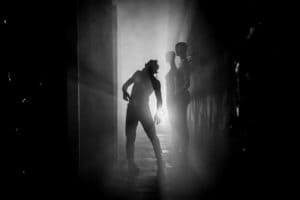
The Cost of Your Experience
With a relative idea of what your company wants to produce, you can begin to determine costs of an upcoming experience: are you making a small intimate one-on-one show from the comfort of your own apartment or are you producing a large warehouse show with thousands of people going through in a singular run? While the logistics and costs are vastly different between the two, determining a budget is essential to understand ticket prices.
Fix tells us for his first year 3,200 people went through their experience. This number rose to 3,800 in year two and grew further to 4,200 in year three. Despite the growth in visitation, his scope grew as well—the length of his shows increased from 30 minutes in year one to a full hour in year three. This shift was reflected in his ticket prices as they went “from $40 to $55 to maxing out at $75” in their third year.
In an artform with narrow margins, it is common knowledge that actors, photographers, and other artists aren’t always paid for their work. Some companies hire their friends or do the work themselves. But paying other artists is something that Fix feels strongly about and incorporates into the values of Just Fix It Productions. Fix tells us that it’s often easy to find someone to do some of the work for free—but to him, “(Performers) have worked so hard to put a price point on their work, and I feel a duty to show them that they’re deserving of this.”
Despite the large cost of his talent, Fix tells us his biggest expense is his space. Fix estimates the monthly rent to be about $15,000 on average, with trash ($500 per month) and utilities ($780 per month) on top of that. He laments that he does not have a space that he owns, suggesting that that is “the best way to make money off this thing because then you can produce anything year-round in it.”
Secondly, for him, roughly thirty percent goes toward press and exposure. Obviously, this number will differ greatly across the diverse scope of immersive creators, as a small 30-person show can survive off word of mouth and small-scale press, while something that requires a throughput of 4,500 will require a bit more publicity. To put this in context, Fix tells us that for LORE, they spent close to $18,000 on publicity over the course of the run. “You can put up an entire show for that—and here we’re putting that in just one of our channels.” This is a choice you must make when deciding on your company image, scale, and scope.
Ultimately, this is a hard industry to turn a profit, no matter the scale of your production. For Fix, he’s “reinvested all of (his) profits, year after year after year to make the next year better.” Much like others in the immersive realm, he clarifies that this is not the industry for earning a large paycheck. “I’ve paid myself nothing all three years because I’m trying to build a company. If you’re in it for the money, you’re in the wrong business.”
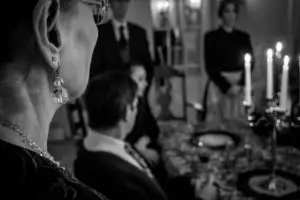
Insurance
“If you’re going to open up an LLC, if you’re going to open up a business, if you’re going to perform in a space, you need to have insurance, protect yourself, and protect those who are coming in.” Fix feels strongly enough about this that he expanded his insurance coverage in his third year. Before that, he “used to do it only specifically tied to the address that we were occupying for those eight weeks.” Now, he uses a policy that extends the full year. “Whatever project we touch, whatever we do, at least I know my employees and my guests are protected.”
He states that it’s tough to find the right insurance—a lot of insurance companies don’t understand the stuff that they do. Describing yourself clearly is key. Fix explains to companies that he is “a three-hundred-and-sixty-degree immersive walkthrough; it’s like an attraction or play, but you walk through it as you go from scene to scene. But yeah, they still don’t really get it.”
In terms of policy, Fix says that he usually runs with a one-million to three-million-dollar policy. (or even more, depending on show requirements when working with a major studio, like with LORE).
He states that there are brokers who specialize in entertainment like this, just like others specialize in music. These brokers can insure all your costumes, your makeup, and your sets. But this brings another issue: doubling up on insurance. “Do my vendors already have insurance on all their stuff—do I need additional insurance for each vendor because that adds an additional $50 for every vendor I add to my insurance policy?” Fix recommends checking with vendors to see if they have insurance because there’s no point in paying extra. “We had to do that with the trees [in LORE] and with the lighting company. Above just the basic profile, we had to do additional add-ons.”
He also recommends checking with the space. For smaller companies, you may be able to be added onto the insurance for the location. At The Reef, the location for LORE, that was not the case—but we have heard places like Zombie Joe’s Underground do allow for this.
Contingency
Fix stresses the importance of having a projected budget at the start and tracking that over the course of your experience. “Basically, put together an Excel sheet of what you think you’re expenses will be, how you’re going to do it, and so on. Because if you’re not keeping an up-to-date tracker of your budget, you won’t know. What we normally do in our budgets is set a 20% contingency on it. This 20% covers all of our incidentals: whether we buy the crew pizza or a light breaks or the floors get damaged or we need to buy more wood chips. Normally, our budget only continues to climb.”
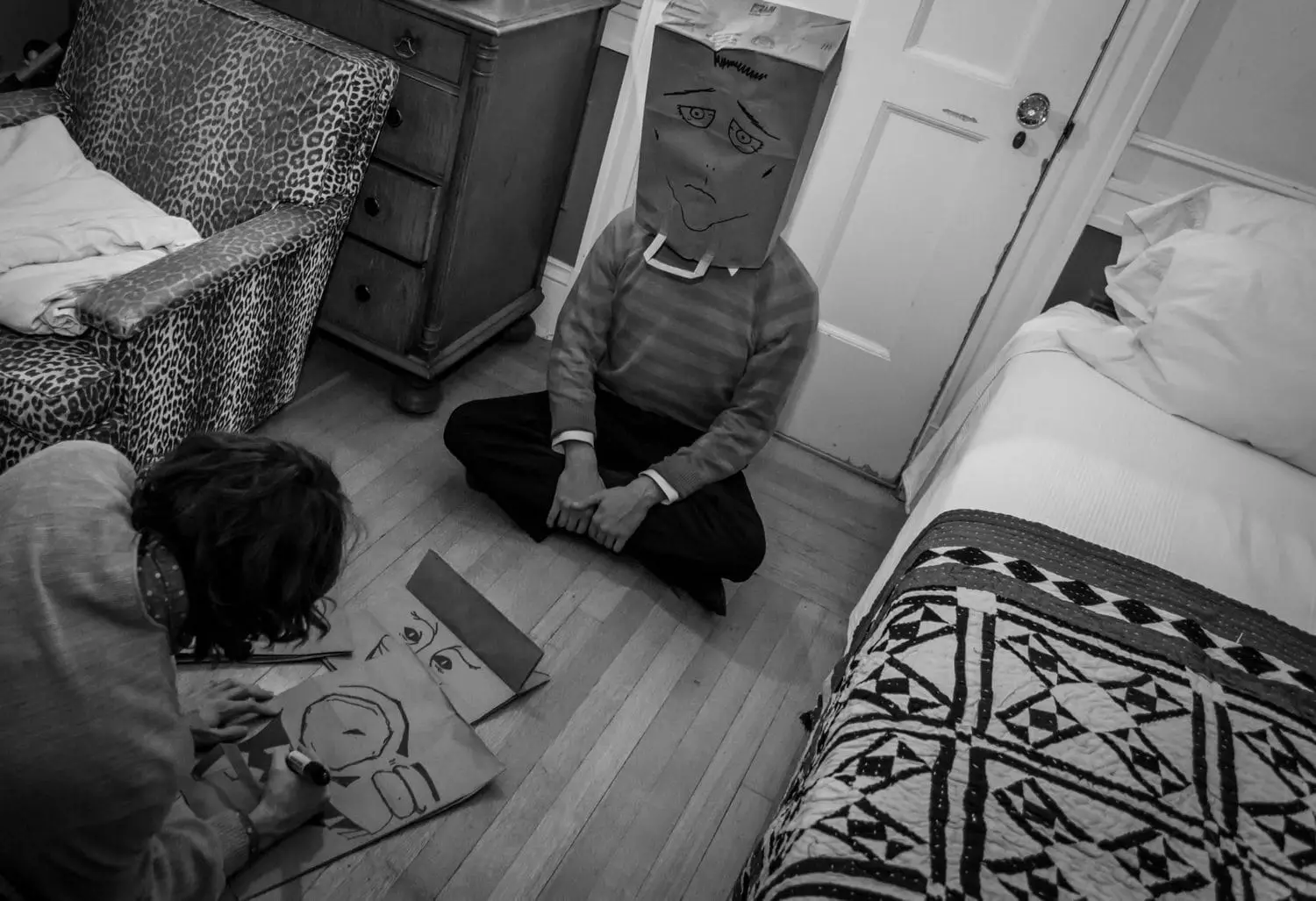
ACTORS & REHEARSALS
So now you have an idea of what you want to produce, a very rough budget, and maybe you’re in talks with insurance—it’s time to start developing the experience. The following sections can be explored in any order, but first we’ll tackle actors and rehearsals needed.
Job Boards
Fix recommends posting on job boards like Backstage.com. He explains that these sites charge “directors or producers a fee to post our work to get talent. So depending on whatever website you’re choosing to post your work on, those each come with their own basic fee.”
But for those looking to cut costs, Fix admits, “We honestly had no money our first year, so we did everything through Craigslist.”
Social Media & Word of Mouth
With the growth of the immersive community, Fix also suggests that using the immersive community (like our sister site Haunting’s Slack) to find actors can be helpful. “Word of mouth and social media posts has been such a great way to hire actors.” Reaching out to other creators, current actors, or even friends can provide another strong alternative to job boards. “This is such a small community; I think that’s why audiences see so many recurring faces. Only certain performers can really pull off this type of work.”
Fix also states, “If we have people who are fans of this work—and some of those people are actually actors—this is a great avenue for finding talent.” He discusses that an email blast to your general audience can help let them know an opportunity exists. This is also something to add to your website: “We have a sign-up tab where we say if you’re interested in being part of the company to sign up here. This way, whether you have a show running or not, you have a list to pull from when you are ready to cast.”
An Ensemble; A Family
CreepLA has been one of the most successful companies at creating a familial vibe among its actors. This is a main focal point for Fix, “I want to build a company ensemble. My number one focus is always on the talent. Look at a person like Misha Reeves—she has been in every single one of our shows.”
“I want it to be a company that if I have a show going on, I can just ask my actors, ‘Got another show happening; you interested?’” Fix compares this mentality to other companies like Delusion, in which Jon Braver cares for his actors and re-uses his talent year after year.
Rehearsal Process
Fix notes that he does “spend a lot of money on the rehearsal process.” For LORE, he did not have the space until September 1st, which necessitated finding a space to rehearse all of August. “We rented out a bunch of old dance studios that were open during the day. A lot of the actors’ classrooms are just too small to work a large show with theatrics. We also were able to do some one-on-one practice at a nice studio called Space Station.”
But as the point of this article is the cost, Fix reminds us that each of these spaces charges an hourly rate—and depending on how many times you want to work, you are paying a lot before you ever get into the space. For example, eight rehearsals at $40 per hour for a four-hour rehearsal costs $1,280.

THE SPACE
Location is a key differentiator in immersive experiences. Numerous creators have found this artform attractive due to the low barrier to entry: productions can be staged out of their own apartment or in the real world. The return on investment in these shows is more often in the green. While Fix admires these small, home-centric experiences and loves their intimacy, he is much more interested in exploring cinematic scale.
Much More Than Just Rent
While rent is the largest cost, there are many hidden costs people don’t think about. “People charge you for power; people charge you for water; people charge you for trash. This stuff is just not free.” But even the concept of striking an entire show has associated costs. Fix ponders, “Where are we going to throw all these feathers, and all these hay bales? What we found out is that you need to rent a dump, a large trashcan—and then you need to pay the garbage person to come pick it up.”
Beyond that, Fix had to rewire some power during their first year because “We used a warehouse space that only had a few outlets and we needed more—which required drawing more power.” It would be ideal to enter a space that is show-ready, but it’s not always that simple.
To reduce costs, Fix started off “with black plastic walls in year one—but now we’ve slowly tried to redefine our experiences to enhance our narratives.” But rather than entering homes with walls, Fix has opted to rent out large, empty warehouses and build them from the ground up. “It’s an ambitious thing, but it’s the only way I knew how to do it.”
A Balancing Act
With LORE, they did not have to rewire anything and were even able to offset some costs because they chose a space that came with lighting. He says the rent was a little higher, but the reduced cost of lighting helped offset that. “It’s all about monitoring a budget. If I’m going to get there, then I have to balance here.”
But Fix is quick to note, “there’s only certain things you can shave down before you either start looking cheap or things come off as having a poor aesthetic. You never want guests leaving saying ‘Really? I paid $60 for that?” There’s been fantastic experiences that have done so much with a small space: Scout Expedition Co’s The Nest and Zombie Joe’s Underground Theatre’s Urban Death come to mind. But Fix likes the expansiveness of the warehouse — “I just wanted people to be able to travel and move.”
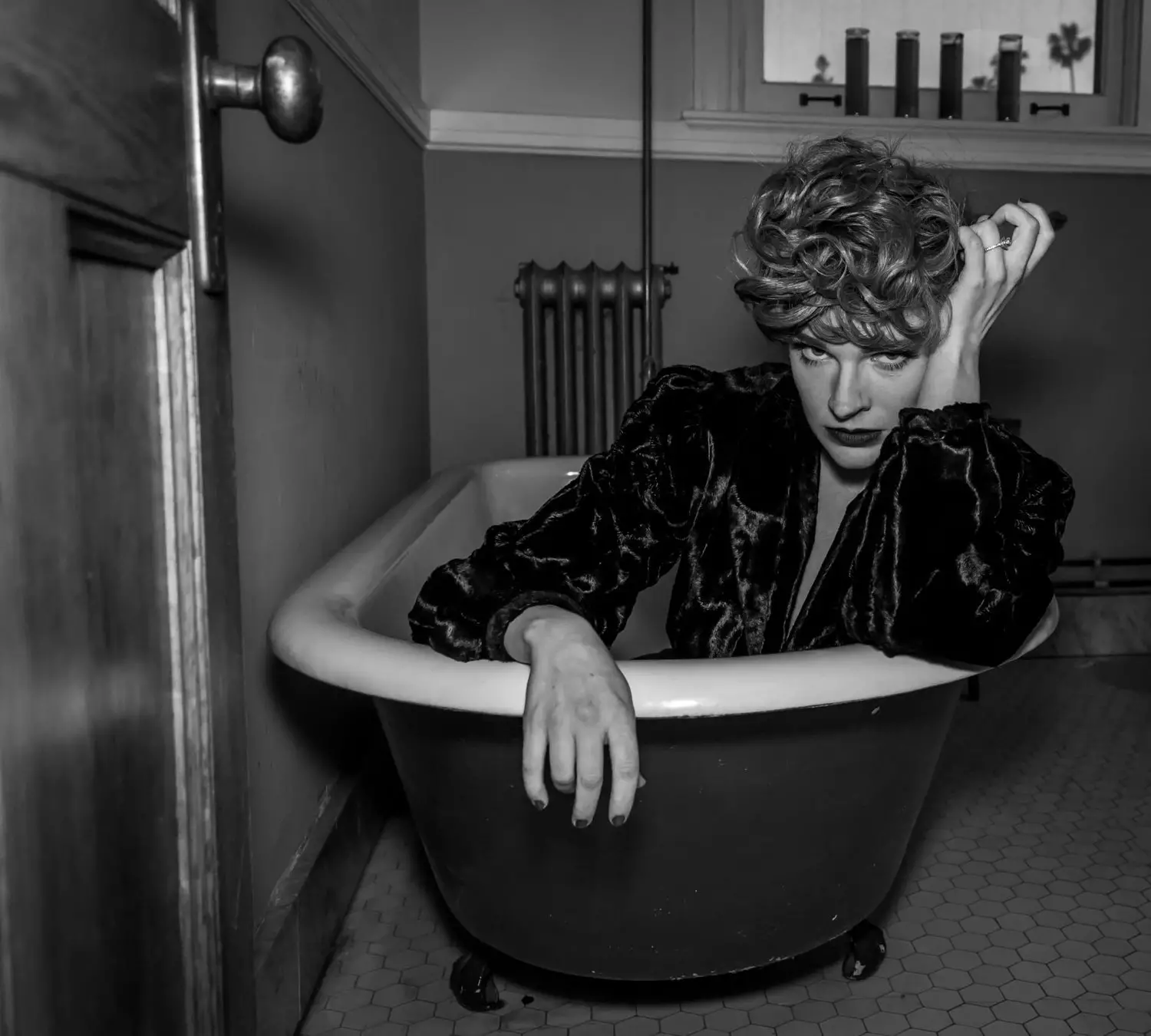
A Transportive Experience
Much like Annie Lesser’s ABC Project, which builds narratives based on various locations, The Willows was built around the family’s house. “With The Willows, that home inspired our entire narrative.” But their Halloween shows, start in a black box shell, that each year Fix adds more and more to. He structures it similar to a haunted house: “The timed entry and small groups pulse from room to room” and that influences the structure.
With Awake (year four), Fix looked for “a space with great bones and structure that provided more of a divided space that feels like multiple layers of a world. This allows for a change of scenery in each area and makes people say, ‘Oh, I’ve only been here for five minutes, but it feels like twenty.’” In this manner, it’s not the size of the space that’s important, but how you use it. Screenshot Productions’ original Fear is What We Learned Here is a great example: a labyrinthine maze of black tarps that literally shifted as guests moved through the space. This all occurred in a household garage but gave the illusion of it being the size of a warehouse.
Fix follows a similar mentality: “With everything we try to do, we always try to do a lot with a little.” And it seems to be recognized because Amazon approached them to collaborate on LORE. “Our space for Entry [year two] was almost double the size of what we had for LORE [year three], but everyone thought LORE was so much bigger. And that’s just because we’ve gotten smarter on how we lay out our experiences.”
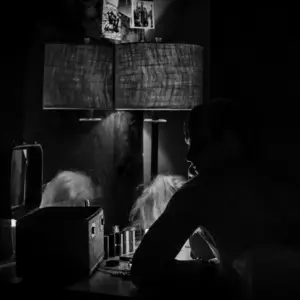
PRODUCTION RENTALS
To Rent or To Buy?
The first two years, Fix was renting all of his sets, props, lights, audio, costumes, and more. When he looked at his books, he saw that over three months of running an experience, “You’re actually spending more money renting it, when you could just buy it for cheaper.” Fix describes this as a big “A-ha!” moment for him. Entering LORE, he began to buy his own production inventory—and then ran into a different problem.
“Oh my God, what I am going to do with all this stuff?” Fix went out and purchased a storage unit—adding in more costs. Fix equates it to a game of tug of war between the two. Again, it depends on the scope, size, and theme of your production, but consider all factors when determining whether to rent or buy.
Reuse of Props
To buy props and furniture, Fix reiterates the sentiment of other companies: “We go to Goodwill, yard sales, estates sales. We also use prop houses for special items.” Some items justify the increased cost to build the aesthetic Fix wants: “With The Willows, we lit every room with candles because I loved the tone and environment. But candles are expensive.” Fix then tries to reuse props when he can: “We had a lot of props from The Willows in LORE.”
Conforming to fire-code is also a concern. All flats must be fire-retardant—and fire-retardant fabrics are expensive (As of this interview, Fix quotes $550 a roll). “I’ve kept all of our fabric year after year because I am not throwing that stuff away—it’s so expensive. Everyone laughs at me because my storage unit is basically just a bunch of boxes of black tarps. But I don’t care because I use it every year.”
“When we’ve done our ribbon rooms in the past, those ribbons are used year after year. And that’s when you can start saving money. Doing that each year, amassing more props you can reuse, only serves you to save money and get smarter.”
Finally, as one last money-saving tip, Fix recommends taking items that are not needed back to Goodwill to potentially get a tax-write off slip. “Try to make the most out of what you’re given.”
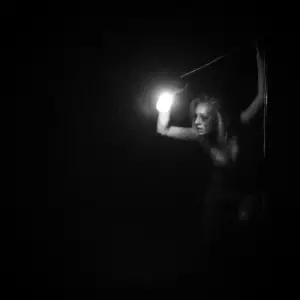
PUBLIC RELATIONS
Event Publicists
Marketing is a key investment for Fix each year. He suggests that “not knowing the proper ways of navigating the press circuit in Los Angeles can be detrimental—and a publicist can help you navigate that.”
Fix never had an in-house person to manage that, so he opted to have a third-party manage publicity. This covers Facebook ads, outreach to Los Angeles media, and print work.
Takeaway Items
A signature of CreepLA is the Creep Photobooth. “It’s been the best billboard for us!” Fix exclaims. But while the photobooth has seen success, other sharable items have not been so successful. “Those CreepLA bandanas—those were so much money; I’ll never do those again. It was something I thought was so important, but just didn’t work.” With a price tag of $3.60 per bandana, the marketing was just not worth it.
But Fix is quick to stress the value of a takeaway item. “Any sort of takeaway item, any sort of promotional moment or sharable experience—people crave those. People love to post them on social media and tell their friends—especially when it’s something good or worth keeping.”
Press Nights and Timing
A main portion of public relations is their relationship with the press—and Fix knows how to throw a killer launch party, with celebrities like Anna Kendrick, Brittany Snow, and Joey Fatone often making appearances. “We always host a press night where we comp everyone’s tickets and provide food and drink to start our season right.”
However, Fix admits he struggles with the best time to invite press to his events. “I’m so eager. I want to open our doors with the press and media—but when I look at how strong a show becomes once our actors are warmed up and comfortable, I think I should wait to have press come through. But a part of me feels that I don’t want the public to have to pay prior to press reviews. It’s my own struggle with timing.” Despite this struggle, Fix normally goes big with a premier at the start of his season.
Fix also discusses the timing of when to talk to press. “If you’re doing a certain season or holiday show, you need to start planning two months prior.” For him, his shows are usually tied to the Halloween season, so he suggests “having conversations with everyone—whether its your own team or the media—in the middle of July to prep for a September release of information.”
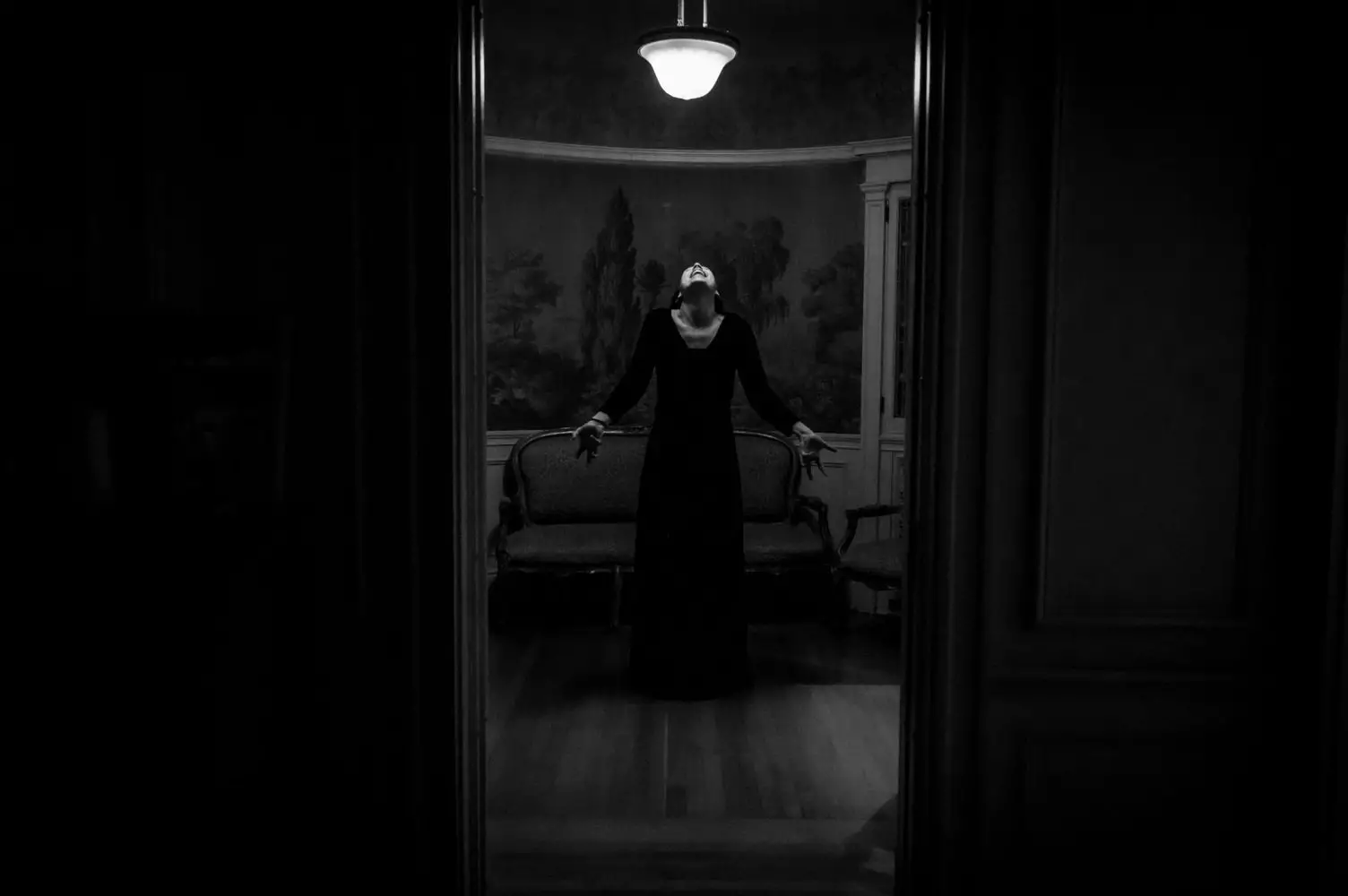
Press Invites
He also states the importance of inviting press that relates to your show. “I feel like everyone is a writer, a blogger, or a YouTube personality nowadays. You are hosting every single person that comes through your doors—and it costs you. It’s still a full operating night.” Depending on the size of your production, adding another person could mean very little to you in terms of a ticket price or it could be a significant portion of your run (especially for one-night events).
For larger productions, companies can sometimes offer press a plus one (or press will ask for a plus one). Fix recommends being clear about whether you’ll allow this or not. “Make sure you reach out and target the proper audience. Everyone is down to ask for a free ticket; but you, unfortunately, need to be selective on that process to make sure it is the right fit. You don’t need mommy bloggers coming if that’s not your target audience.” Fix also recommends to not offer all your friends comps either. “It’s all a piece of the pie; it adds up.”
House Tickets
Another free ticket comes from the theater term, “house tickets”. These are a small amount of tickets that are available if any press or VIPs want to come in throughout the season. “For each night, we pull a small amount of tickets that have not been release publicly to accommodate those people. That’s kind of a little trick.”
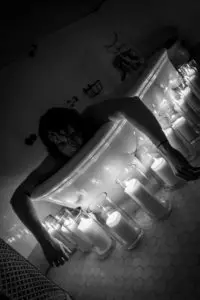
Exclusivity
Exclusivity is a great way to sell tickets. Firelight Collective utilized this when selling tickets to Stars in the Night. A one night – or one weekend – event will generate more demand than a show that runs for a month or two. “I think it’s a really smart marketing tool,” Fix agrees. “A lot of companies are creating really small, intimate experiences that allow them to extend, extend, extend. What a smart business model.” That’s exactly what Firelight Collective did—they extended once their first weekend sold out. “Even if your input a month is only 30; if you extend, it creates a hype which is a nice trick or tool people can use.”
While Fix sold The Willows’ tickets one month at a time to generate a similar demand, for his Halloween shows he can’t use the same tactic. “We’re open for 6 weeks; we have to get as many bodies as possible in here. Let’s go!”
The Importance of Photography
Fix ensures that his imagery and aesthetic are striking and evocative. “We live in such a swipe right society, if you don’t have an image that just catches you and causes an instant reaction, you may get passed over.”
Fix tells us about a social media class that he took to learn more about composition, what colors evoke various feelings, adding a call to action to images, and creating brand associations. “I can’t stress the importance of photography enough. We’ve been so lucky that we captured some great images; images that make me say ‘Damn, these photos make our show look good.’”
These pictures are necessary for your press kits and directly impact the ticket sales. For the press kit, Fix recommends “you have a pitch sheet on both you and your company members, along with your company’s mission,” and numerous pictures. We have seen this time and time again, with E3W Productions’ In Another Room selling out prior to their first ever show based on the merit of the imagery.
Photography also extends beyond the current show, impacting all future shows. Pictures become a time capsule; “It becomes a talking point for future projects that you will produce.” If people missed out on previous events, these pictures will be their introduction to you and your work. “Our imagery and aesthetic is representative of our past work; it’s something that I can show off and be proud of. It’s also where you’ll find those partners and sponsors.”
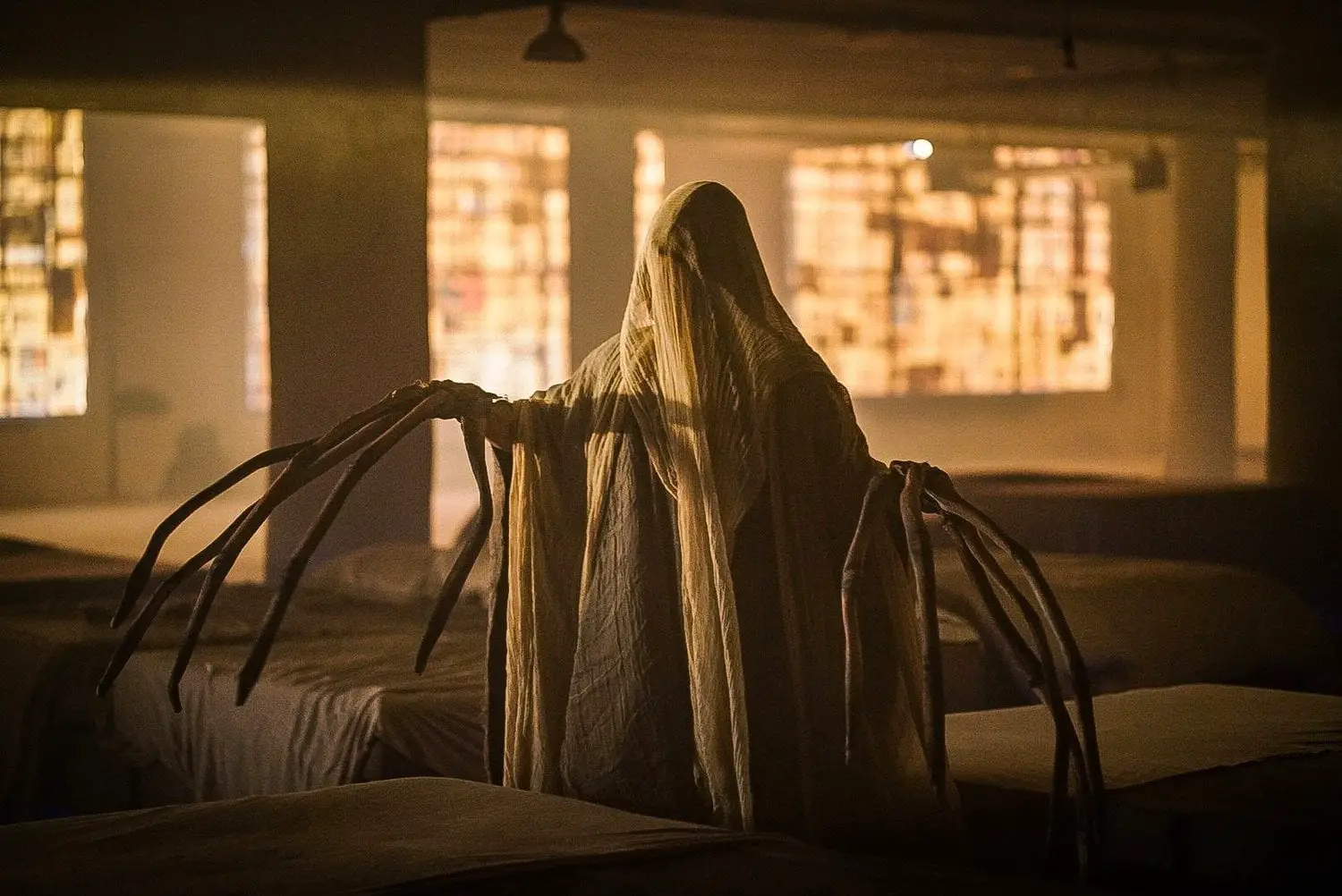
Website and Branding
Fix discusses the importance of having a user-friendly website that also matches the aesthetic and vibe of your show and brand. He remarks on the website of Scout Expedition Co., which feels both adventurous and fun: “Their website is lovely; it makes me intrigued; it’s so them.”
For Fix, “Our brand has always been very simple, basic, and modern with clean lines. I like black and white.” When you see an image from The Willows or from CreepLA, it’s clear that it is a Just Fix It Production image. “Our brand will naturally transcend into the production; it all becomes an ecosystem supporting one big narrative.”
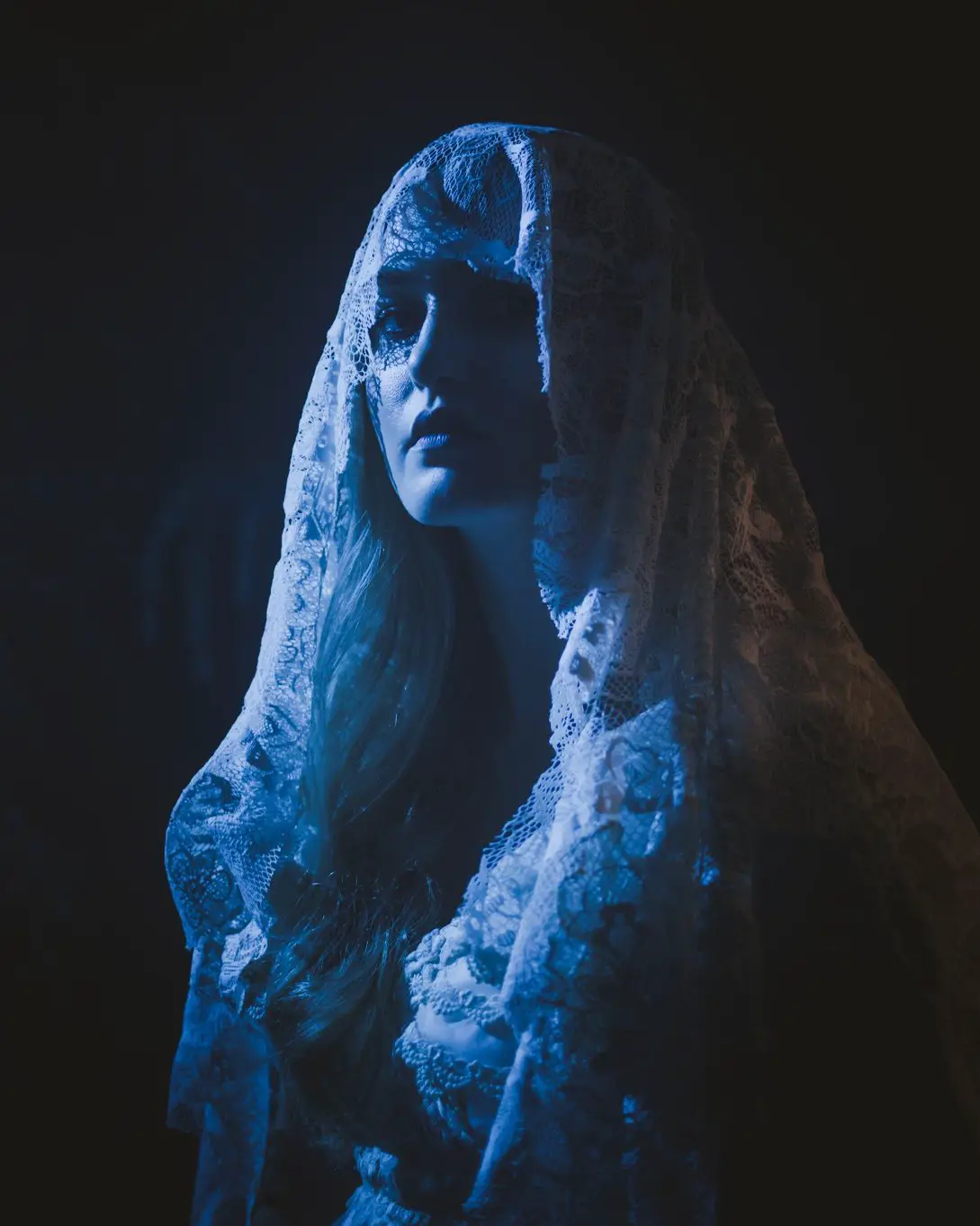
OPERATING NEEDS
The Talent
The number of actors needed has one of the largest influences on your budget. “You have a story and you need actors to tell that story; that’s truly your main expense.” Fix has done both large shows and smaller shows Each number was chosen specifically to tell the narrative and match the performance. “The Willows was a smart model for us because it was an intimate show with only eight actors. With these big shows, LORE had twenty-nine actors, talent is such a big expense.” As addressed above, Just Fix It Productions always pays their actors. “If you are a business owner selling tickets to your work, you need to pay your talent.”
There are some experiences that do not utilize in-person actors to tell the story—like Scout Expedition Co’s The Nest, which used audio cassette tapes to drive the narrative. “I think escape rooms are a great model because there’s usually no actors, just puzzles.”
Security
“Generally, you have to have security there, whether you’re serving alcohol or not. Usually, the Fire Marshall expects it for public assembly.” Fix quoted this expense is nearly 500 dollars nightly for two to three guards.
Crew
“Everyone, from the person running your front door to your stage managers to your lighting staff to your bartenders, make up your crew. That’s why you’ll see people like me bartending during LORE because it’s just another expense.” Fix quotes 9 crew members cost him over $1,000 per night.
Dependability
With Los Angeles being the epicenter for entertainment, Fix explains that everyone has to look out for themselves—they’re always searching for the next big thing or a bigger job. An important quality to him is dependability and consistency. “When trying to wrangle an ensemble of 20 actors and 9 crew members, I don’t want to have to wonder if they’ll show up today.” Fix explains this is yet another reason why he ensures he pays his actors and makes them feel like part of a family.
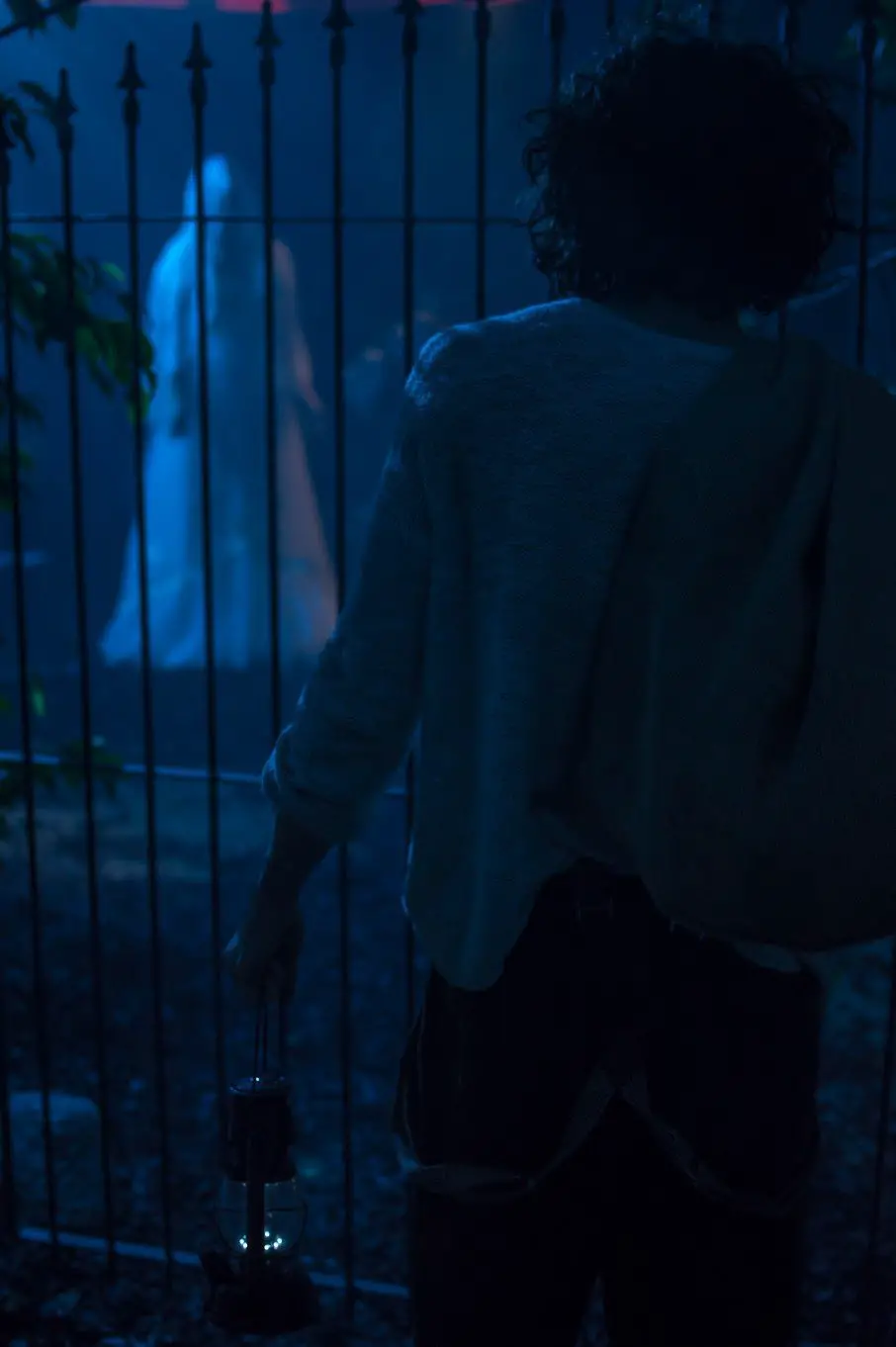
GENERAL COSTS
Kickstarter
“The problem with theater and live events is that you have none of the working capital until you sell tickets. Unless you’re just wealthy, you’re living off of credit cards or you’re living off of profits from the previous year. That’s the hardest challenge.”
Fix mentions Kickstarter as a strong way to get working capital up-front. CoAct Productions successfully funded The Sideshow via Kickstarter, offering tickets, VIP experiences, and handwritten letters to backers. Other companies that do more consistent and frequent shows have used Patreon to fund their shows, such as the ABC Project, Santu Productions, and Hurting. Fix sees the potential in this: “I would love to have you come in and do a behind-the-scenes tour, and you’ll get to take home a set piece.”
Reinvestment
Fix says, “I have not lost money since I’ve opened this business, but I’ve not made money either.” As he mentioned above with props and costumes, he is a firm believer in reinvesting his profits into Just Fix It. “Everything I’ve made, I’ve put into the next show. So there’s been no personal profits. But at the end of the day, the business itself is profitable.”
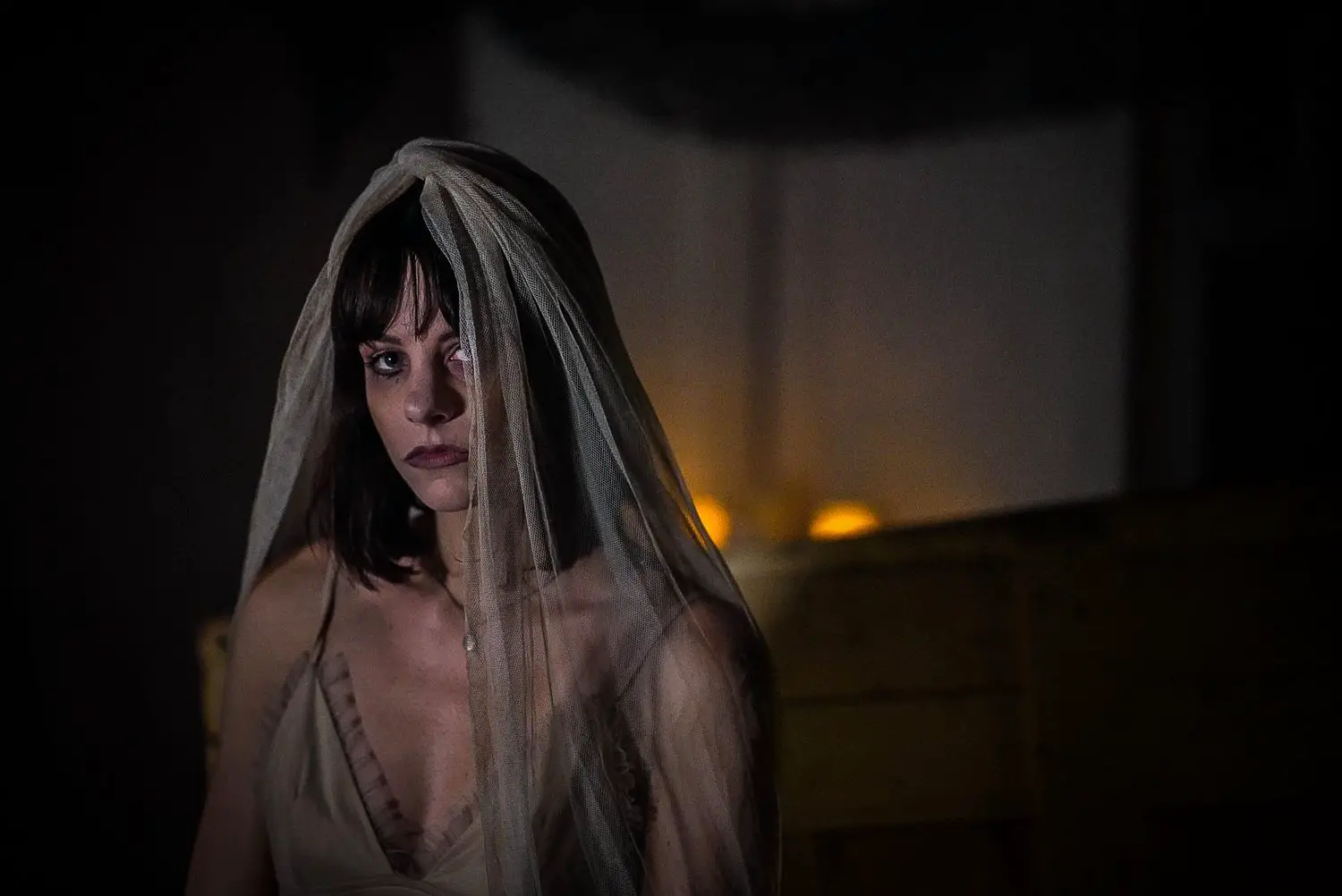
A Longer Run
Once you’ve secured all of your props, costumes, make-up, and so forth (your fixed costs), the only costs that remain are your rent, actor and crew salaries, and beyond (your variable costs). So the budget for a single show may not be profitable, but when extended over a season—you may start to see a profit. “The only problem with extending and longer runs is ensuring that you sell out and that the demand is still there.”
“It’s always been wild. The first year, we didn’t come out of the red until the final week.”
Fix celebrates this end to his show. While the profits for the first show were extremely minimal, he still says it got him momentum. “We reached an audience; we were able to build a brand. There’s so many things I can speak to; it’s not about the money.”
General Lessons
Fix speaks candidly about some mistakes he’s made: “I probably don’t need to go source costumes, I can just go to Goodwill and make some home alterations. I don’t need to hire a makeup artist like I did one year. We can instead teach actors how to apply their own makeup. These are all simple things that help us save a little money. Being a good business owner is always refining processes and reducing the cost of operating.”
“I always joke with Daniel [the co-artistic director and writer for Just Fix It], ‘Daniel, I think the first time you ever held a screw gun was the first time we built a show together.’” Fix says there’s not one part of a production that he doesn’t have his hands on.

CITY OF LOS ANGELES
Immersive theater does span the gamut in terms of legality. Small shows sometimes don’t have the correct permitting, and even larger shows may not understand the correct permits needed. To Fix, careful consideration of permitting is essential to the health of immersive theater in the long run. While we at Immersed are not advocating small bootstrap companies to change things overnight, we want to provide this information, especially for the larger productions that need it.
A City of Dreams; A City of Rules
Fix doesn’t want to stand on a soapbox and proclaim: “If you’re running illegally, you shouldn’t be opening; you’re going to ruin it for everyone else.” But he does confess some anxiety. “For every good business operator, there’s five bad ones. And that can screw us in the long run.”
Permits, Permits, Permits
“Everything costs money; and there’s a permit for everything.” Fix goes over examples for us. “You may need separate permits from Building and Safety, the Police Department, and the Fire Marshall.”
Where do you start then? Fix recommends going to the city and applying for a TSE Permit (Temporary Special Event Permit) through the Department of Building and Safety. These are currently $137.80 per event. But these only have a maximum duration of five consecutive days. “Cities like West Hollywood only approve for three consecutive days; the City of Glendale, I think, is seven days. You need to first determine the scope of your work and how long your run is. Then you need to put together a packet of your floor renderings, your fire emergency plan, and so on—and these all need to be professional.”
Fix also tell us that “the City of Los Angeles is simply not granting TSE Permits to nontraditional venues like they would in the past.”
“The way we’ve been able to navigate the system was using TSE Permits; but now that they are not being granted from the city… anyone who’s producing work in the City of Los Angeles that is not in a banquet room, a convention floor, or so forth, it is not approved. I repeat, it is not approved.”
Editor note: While this information is correct at the time of this article’s release, the climate in LA is slowly changing and the policy on this permit may be updated in the future.
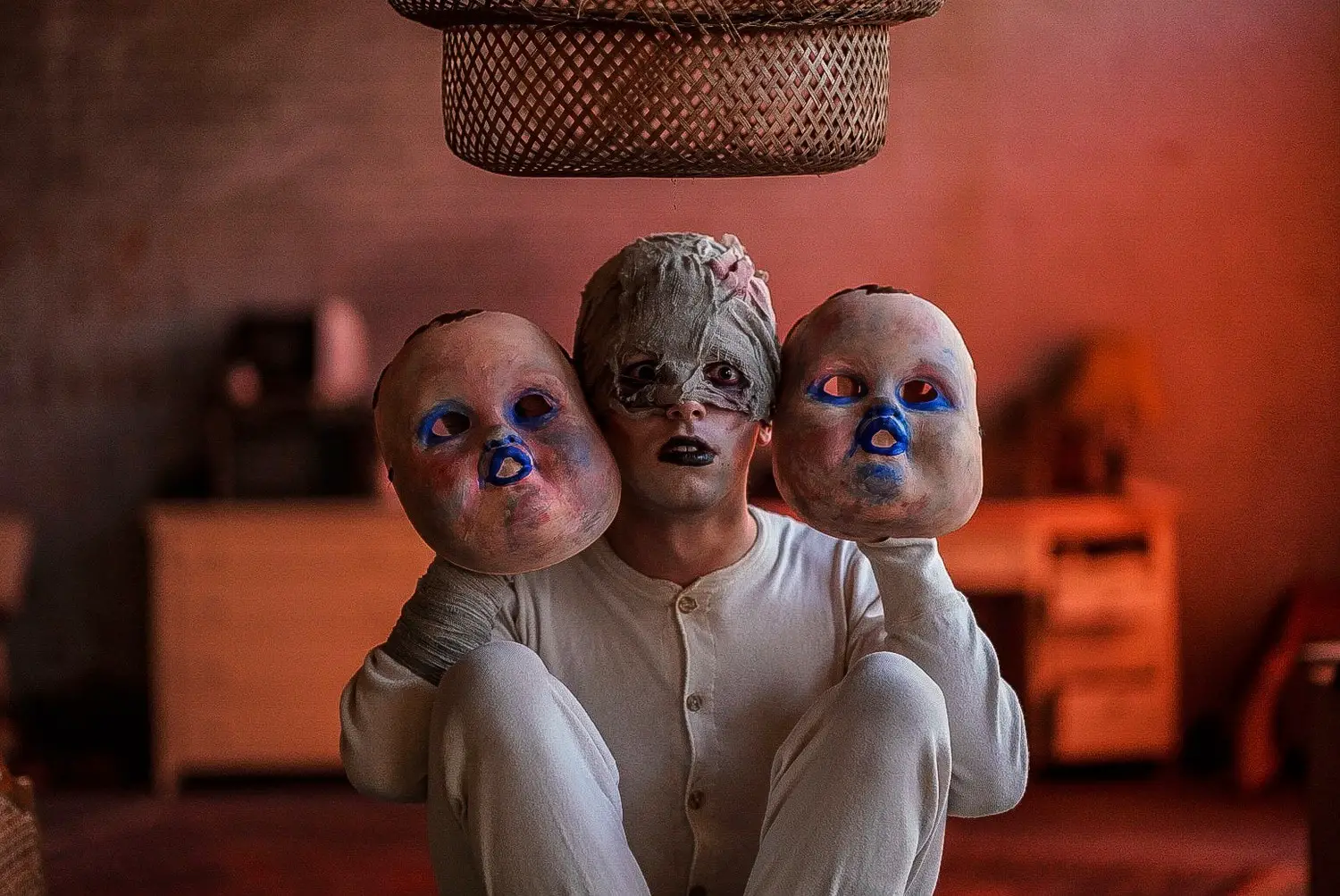
The Risks
What’s the risk? Well to some, who are doing this in their house or on a hiking trail, there’s very little. “Los Angeles isn’t going to put a spotlight on these people and follow you every day. They might slap your wrist, give you a small fine, and then you can go on your merry way. You may even be able to open your doors again the next day. But I don’t want to risk that.”
Fix wants to control everything he can to minimize risk. He can’t control if tickets are going to sell or if people are going to come, but he can try to control not getting shut down.
The Uncertainty of the Permit
Even if you are granted a TSE Permit, Fix tells us they aren’t granted until the week prior to your event. “You apply for 9 weeks of TSE Permits all at once, but they approve them week by week. So now you’re invested; you’re selling show tickets and you don’t even know if your show will be granted permission from the city until Monday at 9:00am when they drop it off at your location. I’m biting my fingernails the entire time.”
The Fire Marshall
The Ghost Ship fire in Oakland changed the guidelines here in Los Angeles. “The city is now turning down big Red Bull events and shutting down large places that are on PeerSpace. Warehouses no longer count as event spaces. You have to get a Change of Use Permit for that.”
To make things safer, “Everything has to be flame retardant, four-foot egresses, handicapped accessible, emergency flow plans, a fire extinguisher, and so on and so on. Also, normally, the LAFD will want to see what kind of operation you’re doing. So on your first night, you have to pay them to come, do an inspection, and be onsite so they can see how you manage your experience. That’s $80 dollars an hour for five hours.”

ABC Permits
Fix tells us that applying for an alcohol permit is one of the more complex permits. For that reason, “I use a charity partner, but then 100% of your bar profits have to go to the charity. We do a hosted bar every night, and that is all going back to do some good. That’s a big mission statement for us.”
“If you want to collect a profit on anything, you’ll have to speak to a concessionaire and have them apply for permits. You’ll have to hit a certain number of concessions for them to even say ‘Yeah, that’s worth it for us.’ If I’m only going to bring in $500 worth of food and beverage, it’s just not worth it for the concessionaire to waste one of their permits.”
Permitted Locations
If they aren’t granting TSE Permits anymore, then how did CreepLA do their show? “I was granted one because I used a space that has a CUP, a Change of Use Permit, that approves public assembly, events, conferences, and conventions. Because I was in a space that you are allowed to produce and do that kind of work.” Fix tells us that finding a location that is coded and licensed for your event will make things far easier for you. “Most locations coded for this are libraries, schools, convention centers, and other large spaces for people. What that means is that the general public come and navigate the building without having to give it too much thought—much like apartment complexes would have emergency exits and signs.”
However, using these spaces has its drawbacks as well. “When you use these big event centers, they are used to getting $7,000 for a single day. So when I come in and say, ‘Hey, I want to produce a four-month event here. Can we do it?’ and they just look at me like, ‘I’m not missing out on all that money. I’d make more money just having an event here four times in one month rather than giving you the space for four months.’” This is a constant battle in Los Angeles.
Red Tape
All of this is risk for the city. Fix discusses his first year: “We had so much red tape because no one knew who we were. The city came in and checked our space before building, during building, and during operations. They came in constantly. But fast forward to year three, since we’ve been running so much, they kind of know our name. They’ve seen over the past years that we haven’t run into any issues and we’ve done everything by the book. It’s not that they are more lenient per se, but it’s that we now know how to navigate the city. We know who to talk to. There’s no textbook on this… I literally just spend hours at the Department of Building and Safety, just sitting, waiting for my number to be called just to ask simple questions.”
The Comfort of Home
The Willows was run out of a private residence, and Fix says they found something really special with that experience. “It’s a totally different thing for residential and HOAs—the city can’t really touch that. But neighbors can shut you down.” But how do you be a good neighbor? Do you let them know prior or do you keep it a secret? Fix doesn’t have an all-encompassing answer for this; it’s dependent on the show. “Sometimes, people just have it out for people. It’s added risk.” Fix notes that in the past inviting neighbors to the experience and being aware of community guidelines has avoided potential conflict.
Final Thoughts
Ultimately, this comes down to risk. “If you don’t mind risking your experience being shut down, then do whatever you feel like you need to do for your business. But if you want to eliminate that risk, then yeah, you need to get into somewhere that’s Public-Assembly-approved, like a convention floor or banquet hall. That’s the only way to operate at this time within the L.A. Market”.
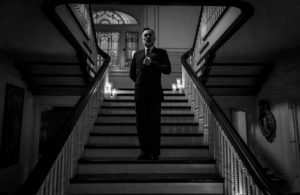
CONCLUSIONS
Immersive theater is expensive, it is a business, and it carries a lot of risk. Being aware of these hidden costs and risks can only help creators budget better and make experiences safer. This article may pertain exactly to what you’re doing, or it may not pertain at all—but either way, I hope there’s at least one thing in this article that is applicable to you, opens your eyes, or makes you think. And even for those who are taking on the risk and surviving in the underground, I hope it gives us pause to think about risk a moment.
Despite all the talk of price, saving money, and risk, Fix still wants to ensure that the customer is given the best experience. “I build this for our audience. At the end of the day, all of this is built and done for the guests… I never want to cut back or have an audience member think something feels cheap. I want people to be blown away with what they have come into. The worlds and moments great immersive experiences create are priceless—this is truly the future of storytelling.”
To us, it provides a sense of discovery, freedom, and wonder—and we’d pay anything to feel that. We tell him his shows are our adult playground. Fix agrees, “I never want to grow up.”






Thank you for this! So, so informative.
Excellent article. Very helpful to understand the preparations required and the myriad expenses that must be built into the ticket price. Thank you.
Comments are closed.